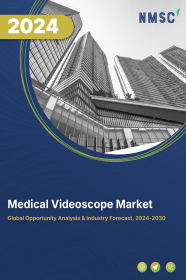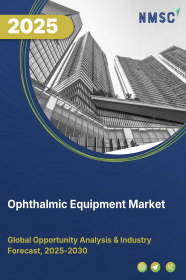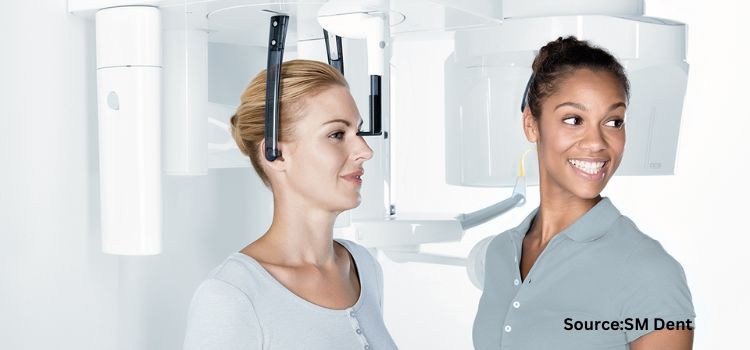
Medical videoscope Market by Type (Rigid Videoscopes, Flexible Videoscopes and Visualization & Documentation Systems), by Application (Laparoscopy, Gastrointestinal, Arthroscopy, Obstetrics/Gynaecology, Urology Endoscopy (Cystoscopy), Bronchoscopy, Mediastinoscopy, Otoscopy, Laryngoscope, and Others), and by End User (Hospitals & Clinics, Diagnostic Centres, and Others)- Global Opportunity Analysis and Industry Forecast 2024-2030
US Tariff Impact on Medical Videoscope Market
Trump Tariffs Are Reshaping Global Business
Market Overview
The global Medical Videoscope Market size was valued at USD 17.21 billion in 2023 and is predicted to reach USD 26.27 billion by 2030 with a CAGR of 6.23% from 2024-2030. Medical videoscope can be defined as an optical instrument that is inserted into the human body to obtain live internal images of the organs.
These real-time images taken by videoscopes are monitored by the surgeons during a medical examination or surgical procedure to oversee patient’s condition. Medical videoscope has made it possible to perform a surgery with minimal blood loss and increased rate of healing as it uses a small incision or a natural opening during a surgery or screening. Medical videoscope is used in diagnosis of visceral organs of the human body such as colon, bladder, brain, gastrointestinal tract and the lungs.
Market Dynamics and Trends
High demand for medical videoscope owing to the growing preference for minimally invasive surgeries across the globe as it causes less pain for the patient and significantly reduces the length of stay at hospitals. Also, cost-effective nature of medical videoscope procedures in terms of pre- and post-operation care is further driving the growth of the market.
Moreover, use of medical videoscope in endoscopic procedures for diagnosis and treatment of several diseases such as colorectal cancer, stomach ulcers, noncancerous tumours and gastroesophageal reflux disorder (GERD) is driving the medical videoscope market.
However, high investment cost of medical videoscope systems and lack of skilled medical professionals such as endoscopy physicians and surgeons in the emerging countries are the factors restraining the growth of medical videoscope market. On the contrary, technological advancements and breakthroughs in the field of medical videoscope such as 3D image technology, ultra-fine single chip cameras and ultra-high defined LED multi-light technology that improves clinical efficiency are expected to create ample growth opportunities for medical videoscope market in the coming years.
Market Segmentations and Scope of the Study
The medical videoscope market is segmented on the basis of type, application, end user and geography. On the basis of type, the market is further sub-segmented into rigid videoscopes, flexible videoscopes and visualisation & documentation systems. The rigid videoscopes market is further sub-segmented into laparoscopes, arthroscopes, cystoscopes, urology endoscopes, gynaecology endoscopes, neuroendoscopes and others. The flexible videoscopes market is further sub-segmented into colonoscopes, upper GI endoscopes, broncoscopes, sigmoidoscopes, laryngoscopes, pharyngoscopes, duodenoscopes, nasopharyngoscopes, rhinoscopes and others. The visualisation & documentation systems market is further sub-segmented into light sources, camera heads, wireless display & monitors, endoscopy cameras, carts, digital documentation systems, video processors & video convertors, transmitters & receivers and others. On the basis of application, the market is classified into laparoscopy, gastrointestinal, arthroscopy, obstetrics/gynaecology, urology endoscopy (cystoscopy), bronchoscopy, mediastinoscopy, otoscopy, laryngoscope and others. On the basis of end user, the market is divided into hospitals & clinics, diagnostic canters and others. Geographic breakdown and analysis of each of the aforesaid segments includes regions comprising of North America, Europe, Asia-Pacific, and RoW.
Geographical Analysis
North America holds the lion share of medical videoscopes market and is expected to continue its dominance during the forecast period. This is attributed to well-established healthcare infrastructure in the region that increases the adaption of medical videoscope systems among public healthcare providers. Also, rising geriatric population along with prevalence of age-related diseases such as cardiovascular disease and osteoporosis that requires medical videoscope for diagnosis and treatment is further driving the growth of the market in the region. As per the Population Reference Bureau, the population of Americans aged 65 and above is anticipated to rise from 58 million in 2022 to 82 million by 2050, indicating a 47% increase. Additionally, the proportion of individuals aged 65 and older in the overall population is expected to climb from 17% to 23%.
On the other hand, Asia-Pacific is expected to show a steady rise in the medical videoscope market due to the highest number of patients with gastric or stomach cancer in countries such as South Korea, Japan and China. For instance, diagnosis procedures of stomach cancer such as endoscopic gastroduodenoscopy (EGD) uses medical videoscope equipment for screening of cancer tissue. Also, introduction of artificial intelligence (AI) in medical videoscope as it makes endoscopic procedures more efficient and accurate is driving the market in the region. For instance, in September 2021, Fujifilm launched a new software version for Fujifilm CAD EYE in India. CAD EYE is a software used in colon polyp detection utilising Artificial Intelligence (AI) based on deep learning.
Competitive Landscape
The medical videoscope market comprises of various market players such as Olympus, Karl Storz, HOYA Group, Fujifilm, Stryker, Richard Wolf, ConMed Corporation, Smith & Nephew, Hill Rom Holding and XION GmbH. These market players are adopting various joint venture and product launches across various regions to maintain their dominance in the medical videoscope market.
For instance, in June 2022, Olympus Corporation launched its latest all-in-one microscope called APEXVIEW™ APX100 for medical videoscope industry. APX100 system is AI enabled, built with new advanced optics and comes with an intuitive software that includes a suite of fast and highly efficient smart features.
Moreover, in 2021, HOYA Group and Jiangsu Vedkang Medical Science & Technology Co. Ltd have announced the formation of PENTAX Medical Therapeutics, a joint venture that will develop and manufacture single-use therapeutics in the field of flexible medical endoscopy. This strategic partnership with Vedkang will help Hoya Group to improve healthcare quality around the world as it will offer medical videoscope devices to global customers through the PENTAX Medical sales network.
Key Benefits
-
The report provides quantitative analysis and estimations of the medical videoscope market from 2024 to 2030, which assists in identifying the prevailing market opportunities.
-
The study comprises a deep dive analysis of the medical videoscope market including the current and future trends to depict prevalent investment pockets in the market.
-
Information related to key drivers, restraints, and opportunities and their impact on the medical videoscope market is provided in the report.
-
Competitive analysis of the players, along with their market share is provided in the report.
-
SWOT analysis and Porters Five Forces model is elaborated in the study.
-
Value chain analysis in the market study provides a clear picture of roles of stakeholders.
Key Market Segments
By Type
-
Rigid Videoscopes
-
Laparoscopes
-
Arthroscopes
-
Cystoscopes
-
Urology Endoscopes
-
Gynaecology Endoscopes
-
Neuroendoscopes
-
Others
-
-
Flexible Videoscopes
-
Colonoscopes
-
Upper GI Endoscopes
-
Broncoscopes
-
Sigmoidoscopes
-
Laryngoscopes
-
Pharyngoscopes
-
Duodenoscopes
-
Nasopharyngoscopes
-
Rhinoscopes
-
Others
-
-
Visualisation & Documentation Systems
-
Light Sources
-
Camera Heads
-
Wireless Display & Monitors
-
Endoscopy Cameras
-
Carts
-
Digital Documentation Systems
-
Video Processors & Video Convertors
-
Transmitters & Receivers
-
Others
-
By Application
-
Laparoscopy
-
Gastrointestinal
-
Arthroscopy
-
Obstetrics/Gynaecology
-
Urology Endoscopy (Cystoscopy)
-
Bronchoscopy
-
Mediastinoscopy
-
Otoscopy
-
Laryngoscope
-
Others
By End User
-
Hospitals & Clinics
-
Diagnostic Centres
-
Others
By Region
-
North America
-
The U.S.
-
Canada
-
Mexico
-
-
Europe
-
The UK
-
Germany
-
France
-
Italy
-
Spain
-
Denmark
-
Netherlands
-
Finland
-
Sweden
-
Norway
-
Russia
-
Rest of Europe
-
-
Asia-Pacific
-
China
-
Japan
-
India
-
South Korea
-
Australia
-
Indonesia
-
Singapore
-
Taiwan
-
Thailand
-
Rest of Asia Pacific
-
-
RoW
-
Latin America
-
Middle East
-
Africa
-
Key Market Players
-
Olympus Corporation
-
Karl Storz
-
HOYA Group
-
Fujifilm
-
Stryker
-
Richard Wolf
-
ConMed Corporation
-
Smith & Nephew
-
Hill Rom Holding
-
XION GmbH
REPORT SCOPE AND SEGMENTATION:
|
Parameters |
Details |
|
Market Size in 2023 |
USD 17.21 billion |
|
Revenue Forecast in 2030 |
USD 26.27 billion |
|
Growth Rate |
CAGR of 6.23% from 2024 to 2030 |
|
Analysis Period |
2023–2030 |
|
Base Year Considered |
2023 |
|
Forecast Period |
2024–2030 |
|
Market Size Estimation |
Billion (USD) |
|
Growth Factors |
|
|
Countries Covered |
28 |
|
Companies Profiled |
10 |
|
Market Share |
Available for 10 companies |
|
Customization Scope |
Free customization (equivalent to up to 80 working hours of analysts) after purchase. Addition or alteration to country, regional, and segment scope. |
|
Pricing and Purchase Options |
Avail customized purchase options to meet your exact research needs. |

















 Speak to Our Analyst
Speak to Our Analyst





















